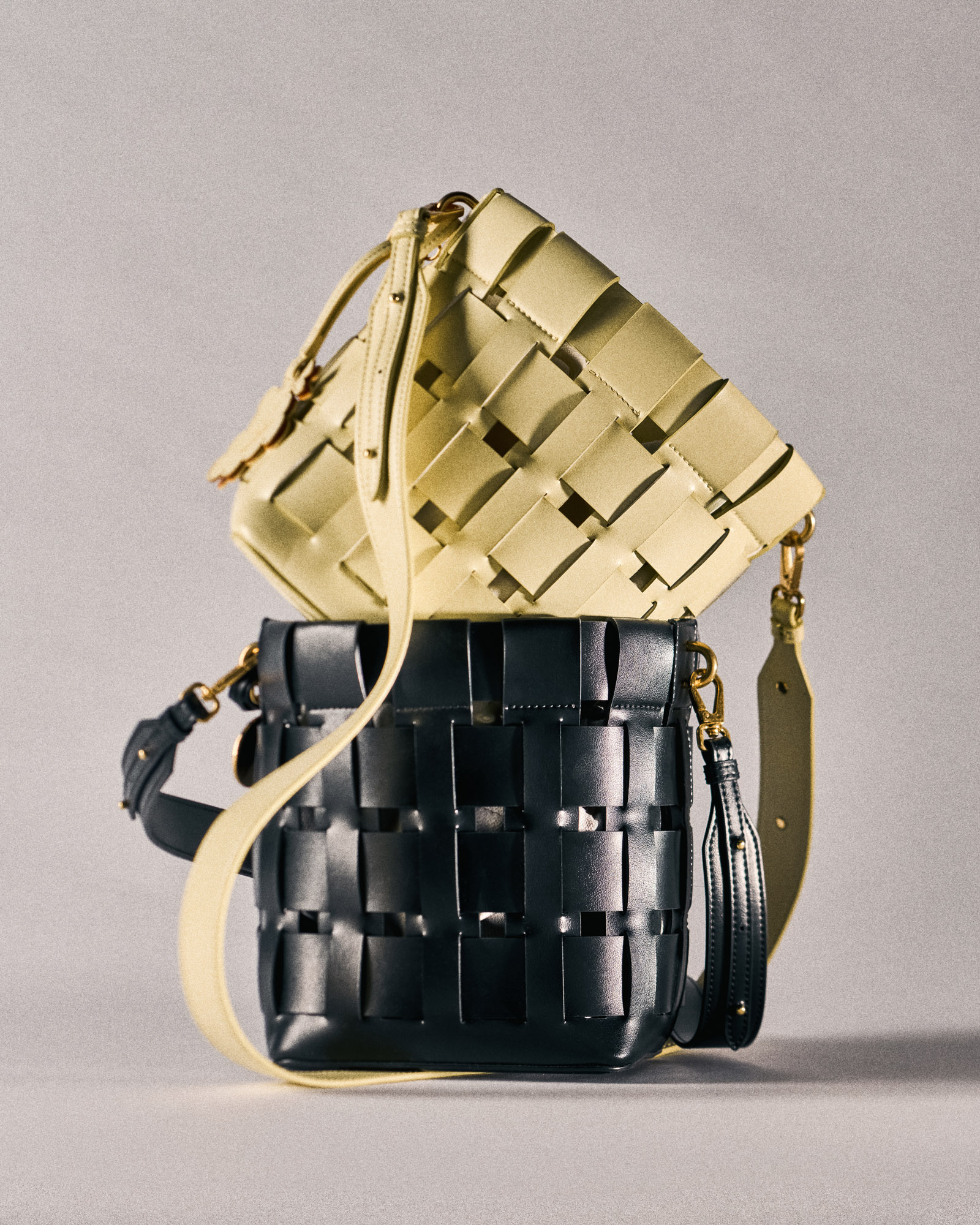
You might expect a designer collaborating with a champagne house to conjure up an aesthetically pleasing bottle or label, and perhaps some merch to match. But this was not the case for Stella McCartney’s recent collaboration with Veuve Clicquot. Instead, it was about what they could give her: specifically, the stalks, skins, pulp, and discarded fruits left over from the grape harvest, which takes place each year between September and October.
The reason is Vegea, a pioneering leather alternative from Italy made from the leftovers of large-scale grape farming. Founded in 2016 by furniture designer Gianpiero Tessitore and industrial chemist Francesco Merlino, it is solvent- and metal-free, and does not use any environmentally harmful substances. It also evokes real leather in weight and suppleness.
McCartney has been using Vegea for some time. She says, ‘One day I said to Bernard Arnault [CEO of luxury goods group LVMH, of which Stella McCartney is a part]: “I’m putting bags down my runway made from grape waste from the Italian wine industry, so why are we not doing it with one of your champagnes?”.’ Less than 18 months later, a woven ‘Frayme’ bucket bag, created from Vegea leather made from Veuve Clicquot grapes, appeared on the Stella McCartney catwalk.
Stella McCartney’s grape-leather bags

Now available for pre-order in limited-edition numbers, each is adorned with a tag evocative of a bunch of grapes, featuring a QR code that details the bag’s construction and traceable origins. An accompanying pair of platform sandals are also made from Vegea and feature a sole made out of popped corks from Café Clicquot, the restaurant at the house’s cellars in Reims.
The region’s strict laws about champagne production means that McCartney can trace the raw material all the way back to a single patch of grand cru vineyard in the village of Bouzy, where Veuve Clicquot grows the grapes to create the red wine needed for the house’s rosé champagne. The technique of mixing wines in this way was pioneered by the eponymous Madame Clicquot, who took over the company after her husband’s death and first purchased this vineyard patch two centuries ago.
‘Madame Clicquot’s innovations revolutionised the champagne industry,’ says McCartney. ‘She created vintage champagne and blended rosé champagne, and helped shape the modern champagne bottle, all at a time when very few businesses were owned by women [a legal loophole allowed her to inherit the vineyard as a widow]. She was truly a disruptor.’
The patch of land is also unique in Veuve Clicquot’s commitment to regenerative agriculture, which largely centres on the rejection of herbicides in favour of natural and traditional techniques. One such method is grazing sheep in the vineyards, which has been shown to improve soil quality and the bioavailability of nutrients, making for quality grapes and abundant harvests.
‘Regenerative agriculture is a long-term commitment – it demonstrates our spirit of climate entrepreneurship,’ says Veuve Clicquot CEO Jean-Marc Gallot. ‘We are always testing new practices to drive the change – eco-grazing, cover cropping or [using] green manure, to name just a few.’
Gallot says he is confident that this initial collaboration with McCartney can be scaled up, and believes that such innovations should be shared with other champagne producers (‘shared, open and collective’ is how he describes the house’s approach to such regenerative practices, which are becoming more and more the norm in the region).
‘I know a lot of our customers have no idea they are buying a non-leather bag, which just shows there’s no need to kill more than one billion creatures annually,’ says McCartney, who has never used animal products in her collections and has been one of fashion’s most steadfast sustainability advocates. ‘I believe we can get to a place where leather alternatives are seen in the same way as the real thing.’
The Stella McCartney Frayme Veuve Clicquot Bucket Bag is available for pre-order at stellamccartney.com.
A version of this article appears in the March 2024 Style Issue of Wallpaper* available in print, on the Wallpaper* app on Apple iOS, and to subscribers of Apple News +. Subscribe to Wallpaper* today.



!["[T]he First and Fifth Amendments Require ICE to Provide Information About the Whereabouts of a Detained Person"](https://images.inkl.com/s3/publisher/cover/212/reason-cover.png?w=600)



